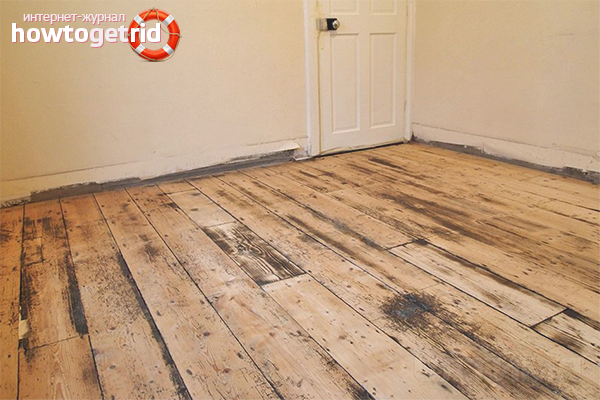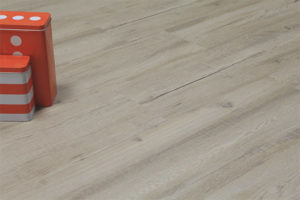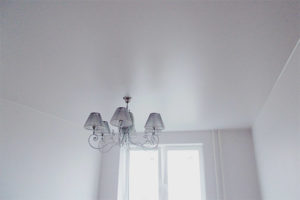The content of the article
Wooden floors are impregnated with acrylic and oil paints to protect against termites and decay. Paint and varnish coatings prolong the life of the boards, but gradually they wear out. Cracks and bubbles appear. You have to remove the old coat of paint and apply a new one. The paintwork is removed by mechanical and chemical methods, sometimes builders combine these methods with thermal, using both solvents and hair dryers.
Classic approach
The old floor, covered with thick cracks and bubbles, can be cleaned with a simple spatula. Buy a tool with a wide and sharp blade that captures large areas. Hands from cuts and pieces of the paintwork layer are protected with thick rubber gloves. They work in a respirator or gauze bandage so that particles of dust and wood do not get into the respiratory tract and do not cause irritation of the mucosa.
They begin with a section of the floor on which the paint is almost separated from the boards. With a spatula, puff up the swollen coating and carefully remove it. The mechanical method is the longest and most laborious. A person will have to spend from 7-8 hours in one small room. The method is harmful for the back, because the employee spends a lot of time in an uncomfortable position.
With mechanical removal of paint, the surface of the boards is damaged. Chips and irregularities remain, cracks appear. Defects will have to be ground and repaired with special primers and other leveling compounds.
The spatula can be replaced with a scraper, rasp or ax. At-hand tools are usually used for processing skirting boards and hard-to-reach areas. The remaining areas are cleaned of old paint with a drill. A large diameter round brush with steel pile is put on the device. You can replace the drill with a grinder with a grinding nozzle.
The power tool is pressed to the floor and turned on. Slowly moving, removing a layer of paintwork. You need to work in tight gloves and closed shoes. Sneakers, boots or boots are suitable. No sandals and rubber slippers. Closed shoes will protect your fingers from cuts. Eyes protect from dust and rolling pins with glasses. Be sure to wear a respirator so that particles of sawdust and paint do not settle on the nasopharynx mucosa.
A stubborn coating that a drill or grinder does not take is removed with a chisel. The tool is tilted at an angle of 45-60 degrees and gently hit the handle with a hammer. In this way, the space between the boards and the plinth is cleaned, as well as the pits that are leveled with a paint coating.
After cleansing the paint, the wooden floor must be sanded. Emery paper attached to a wide bar or spatula is suitable. It is easier to carry out repair work with a special grinding machine. The device will remove bumps and roughness, prepare the boards for applying a new coat of paint.
If you have to remove the paintwork applied in several layers, it is recommended to combine the mechanical method with a chemical or thermal one. Washings or a building hair dryer will soften the paint and then remove it with a spatula or electric tool.
A cycle machine can clean and renew a wooden surface. Sharp tool knives remove the top layer of the boards along with the paintwork. After the equipment remains a flat and smooth surface, which is enough to clean with fine-grained sandpaper. The tool is not necessary to buy. The machine is taken from friends or rented for several days.
Large rooms are cleaned of paint with sandblasting equipment. The method is fast and reliable, but expensive.The equipment “shoots” with small pebbles or gravel, removing the paintwork and polishing the boards.
If you have to upgrade a small room, you can use the old method. You will need an ax, a bucket of water and a brush for paint. Sharp notches are made with a sharp tool. The main thing is to break through the protective shell. The floors are abundantly saturated with water and left for a day. Moisture is absorbed into the wood, softening the paint from the inside. It remains to remove the swollen coating with the same ax or spatula. The floors are thoroughly dried before sanding to ensure good adhesion of the wood to the new paintwork.
Washes and mixtures
The stubborn paint applied in 2-3 layers is softened with chemical preparations before mechanical removal. The method has several significant drawbacks:
- Funds emit toxic fumes, which burn the mucous membrane and poison the body. Work with washes in a respirator, rubber gloves and a protective suit.
- The room remains a persistent chemical odor, which is difficult to get rid of. I have to air the room several times.
- Small particles of softened paint remain on the boards. When grinding, they stick to sandpaper, forming a film, due to which the tool quickly wears out.
- Paint sometimes eats up in a tree, leaving color stains.
With a chemical or combined cleaning method, all the furniture must be taken out of the room. Particles of funds, falling on the legs of sofas and cabinets, corrode the paintwork and spoil the appearance of interior items. The floors must be vacuumed and washed. After drying, the prepared surface is coated with a chemical preparation. The tool is applied with a brush or roller for paint. You can buy aerosols that are simply sprayed onto the desired surface.
In order to better absorb the wash, it is recommended to cover the treated boards with foil or cling film. The drug is kept for several hours. The exact time is indicated on the packaging. The film is removed along with pieces of paint. The remains of the coating are pry off with a spatula or scraper and removed. The room before work must be ventilated so that toxic substances evaporate.
If it was not possible to remove the paintwork the first time, it is recommended that a second time be washed. The procedure is repeated until the boards become clean. The finished floor is dried for 1-2 days, and then polished with sandpaper with medium or small grains.
Among the washes, “Prestige”, “B-52”, “Antiskras-universal” and aerosol “Abro PR-600” are distinguished. The latter is sprayed at a distance of 25-30 cm. The tube is held in an upright position. The product is left for only 20-40 minutes.
Rinses can be replaced with liquid glass. The tool is suitable if the floors are covered with oil paint. The drug is applied to prepared boards and left to solidify. The translucent film is removed along with pieces of softened paint. The remaining coating is cleaned with a spatula or drill. Paint and varnish material from the pits is removed with a chisel and a hammer. Boards before painting must be ground, because small particles of paint remain on the surface. The eye does not notice them, but they impair the adhesion of the paintwork to the tree.
Tip: When buying a wash, it is better to choose narrowly targeted options for acrylic, oil or other type of paint. Universal varieties work slower and do worse with the old coating.
Expensive gels and aerosols are replaced with improvised means. For example, soda ash. It dissolves the paint and facilitates its removal. First, floors are generously moistened with plain water. The liquid is applied with a roller or paint brush. Wet surface sprinkled with a thick layer of powder. Soda-treated boards are sprayed with water and covered with a film. Leave for a day until the component dries.The powder is swept away with a broom, and the softened paint is removed with a spatula or any electric tool. Iron brush drills are preferred. The particles of paint get stuck in the pile less than in the grinding discs of the grinder.
Instead of washing, you can make a paste of soda ash quicklime. Take 400 g of the first and 1.5 kg of the second component. Add a little water to get a thick mass. The gruel is evenly distributed on the prepared surface, hold for 12 hours. A mixture of soda and quicklime even copes with dried coatings that could not be removed mechanically.
Thermal method
If the old paint does not give in to washings and putty knife, it is recommended to arm yourself with a construction hairdryer. Equipment can be rented or purchased. It will turn out no more expensive than a few jars of solvent.
The device has a special button that sets the optimum temperature for heating the paint. You need to select the correct thermal regime and turn on the hair dryer. The floor is previously divided into small squares. They process one area at a time, because the paint quickly hardens.
The building hair dryer is held in one hand, the second is squeezed with a spatula. Choose an instrument with an oblong and narrow blade. A stream of hot air is directed to the selected square and wait until the paintwork swells. Then the hairdryer is cleaned and the floor is cleaned with a spatula. You need to work quickly while the coating is soft. It is imperative to wear gloves on hands so that particles of paint do not stick to the skin and nails.
The old coating emits toxic fumes when heated. Toxic substances, getting into the respiratory tract, cause allergies and asthma attacks. Heaters can only be used in ventilated areas. During operation, open windows and doors. In closed rooms without ventilation it is better to do with a drill or scraper.
Beginners who are working with a construction hairdryer for the first time should ask a friend for help. It is much more convenient when one person heats the paint, and the second removes it. The main thing is to observe safety rules and not to bring equipment to the legs and other parts of the body so as not to get burns.
Renting a hair dryer is an expensive pleasure. Blowtorch is much cheaper. You need to work with a heating device in a similar way: direct the fire at the old paint layer until it is covered with bubbles. Pry off the softened coating with a narrow spatula or scraper. Residues that could not be removed in this way are removed with a chisel or solvent.
Blowtorch is an inexpensive but dangerous device. Before using the heater, flammable objects must be removed from the room and the curtains removed. Do not bring the blowtorch close to the wallpaper so as not to provoke a fire. For beginners who doubt their own professionalism, it is recommended to replace the device with an iron. This method is safer, but no less effective.
To remove the paint, you need a dense newspaper, a piece of foil or chintz fabric. Small holes are left on the paint with a sharp ax. The boards are moistened with plain or salted water from a spray bottle. Cover with paper or a rag. Iron on at maximum. When heated, put on a newspaper or cloth for 30-60 seconds. The device is cleaned together with paper, swollen paint is quickly scraped off with a spatula.
The thermal method can be combined with the chemical one. First, the floors are soaked with a wash and remove the coating, which has softened and lagged behind the wooden base. The remaining paint is heated with an iron or blowtorch.
Thanks to the thermal method, the floors remain dry and smooth, practically do not deform. Minimum garbage and noise. But even after heating, the boards need to be sanded, especially if you have to apply a new coat of paint.
Recommendations
- No need to replace a building hair dryer with a regular hair dryer. The appliance has a small capacity. The device will not be able to warm and soften the paint. Using the hair dryer for a long time may cause a short circuit.
- A grinder or drill should not linger in one place for a long time. The tool is constantly moved so that the floor does not overheat. If you keep an iron brush on the site for more than a minute, the wood will become hot. Brown spots will remain on the surface of the board, which will be difficult to mask. In addition, neighbors can smell burning and call firefighters.
- The iron brush of the drill should not move across the board, but along. Otherwise, the villi will get stuck between the joints and deform. Detached steel hairs can bite into a leg or arm, injuring it.
- If you can’t remove the paint mechanically, a knot may have hidden under the cover. The problem area is treated with a drill. The tool must be directed away from you. You can walk around the problem area in a circular motion, and clean off the remaining paint with sandpaper.
- Doorways before using a grinder and chemical washes are hanged with plastic wrap. A transparent curtain is pressed against the threshold with a damp cloth so that dirt and toxic fumes do not penetrate into other rooms.
- If you plan to lay linoleum or tile on wooden floors, it is not necessary to sand the boards. A rough surface enhances adhesion of the base.
Old paint applied to the floor in Soviet times is better to remove in a combined way. Use a wash or blowtorch and spatula. To speed up the process, you can combine all three methods. And if you want to save time and money, it is recommended not to clean the boards from the old material, but to cover with hardboard and apply a layer of new paint.
Video: how to remove old paint from the floor











Submit